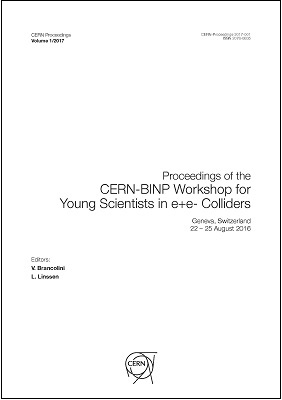The CLIC Detector Concept
DOI:
https://doi.org/10.23727/CERN-Proceedings-2017-001.37Keywords:
CLIC, CLICdp, CLIC detector, new detector concepts.Abstract
The Compact Linear Collider (CLIC) is a concept for a future linear collider that would provide e+e- collisions at up to 3 TeV. The physics aims require a detector system with excellent jet energy and track momentum resolution, highly efficient flavour tagging and lepton identification capabilities, full geometrical coverage extending to low polar angles, and timing information of the order of nanoseconds to reject beam-induced background. To deal with these requirements, an extensive R&D programme is in place to overcome current technological limits. The CLIC detector concept includes a low-mass all-silicon vertex and tracking detector system and fine-grained calorimeters designed for particle flow analysis techniques, surrounded by a 4 T solenoid magnet. An overview of the requirements and design optimisations for the CLIC detector concept is presented.Downloads
Published
2017-06-29
Issue
Section
Submission to the proceedings of CERN-BINP Workshop for young scientists in e+e- colliders
License
Authors who publish with this journal agree to the following terms:- Authors retain copyright and grant the journal right of first publication with the work simultaneously licensed under a Creative Commons Attribution License CC-BY-4.0 (link to external page) that allows others to share the work with an acknowledgement of the work's authorship and initial publication in this journal.
- Authors are able to enter into separate, additional contractual arrangements for the non-exclusive distribution of the journal's published version of the work (e.g., post it to an institutional repository or publish it in a book), with an acknowledgement of its initial publication in this journal.
- Authors are permitted and encouraged to post their work online (e.g., in institutional repositories or on their website) prior to and during the submission process, as it can lead to productive exchanges, as well as earlier and greater citation of published work (See The Effect of Open Access).

